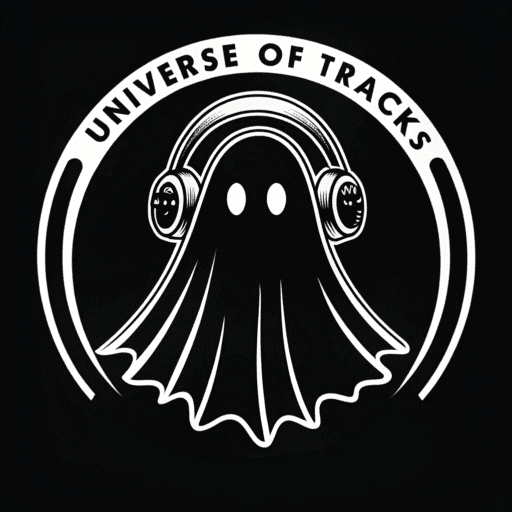Anatomy of a House Hit: Deconstructing the Perfect Groove
House music is a feeling. It’s a universal language spoken on dancefloors from Chicago to Ibiza. But behind that infectious feeling is a carefully crafted architecture—a specific anatomy that turns a simple beat into a timeless hit. While the genre has evolved into countless subgenres like Deep House, Tech House, and Progressive House, the core elements that define a classic house track remain the same.
Whether you’re a producer aiming to create your next chart-topper or a DJ wanting to understand the tracks you play on a deeper level, this guide will dissect the anatomy of a house hit, element by element.
The Rhythmic Foundation: The Unshakable Groove
The groove is the heart and soul of house music. It’s built on a simple but powerful foundation that is instantly recognizable.
The Four-on-the-Floor Kick Drum
This is the bedrock of house music. A steady, consistent kick drum on every beat (1, 2, 3, 4) creates the hypnotic pulse that is the genre’s signature. Unlike the aggressive, distorted kicks of techno, a house kick is often rounder, warmer, and designed to make you move, not just punch you in the chest.
The Off-Beat Hi-Hat
Layered on top of the kick is the open hi-hat, which typically plays on the off-beat (the “&” between each kick). This creates the classic “boots and cats” rhythm (kick-hat-kick-hat) that gives house music its characteristic swing and energy. A crisp, clean hi-hat is essential for driving the track forward.
The Snare or Clap on the 2 & 4
To complete the core beat, a sharp snare or, more commonly, a classic clap sound is placed on the second and fourth beats of the bar. This provides the backbeat and reinforces the groove, creating a rhythmic pattern that is impossible to resist.
The Soul of the Track: The Bassline
If the kick is the heart, the bassline is the soul. A great house bassline is what separates a good track from an unforgettable one. It’s what gets stuck in your head and what you feel in your chest.
Types of House Basslines
The Rolling Sub: Common in Deep House, this is a smooth, low-frequency bassline that sits perfectly under the kick, creating a warm and immersive low-end.
The Funky Slap: Inspired by classic disco and funk, this bassline is more melodic and rhythmic, often using a “slap bass” sound to create an infectious, playful groove.
The Acid Squiggle: A signature of Acid House, this is a squelchy, resonant bassline created with a TB-303 synthesizer, providing a trippy, hypnotic feel.
Finding the right tool to create these sounds is crucial. To help you, we’ve compiled a detailed guide on https://www.google.com/search?q=https://www.universeoftracks.com/blog/best-vst-plugins-house-basslines/
The Melodic & Harmonic Elements: The Vibe
This is where the track gets its unique personality and emotional color.
Piano Chords & Stabs
Classic house music is famous for its use of uplifting, soulful piano chords. A simple, catchy piano progression can become the main hook of the entire track. Short, rhythmic synth “stabs” are also commonly used to add energy and punctuate the groove.
The Vocal Hook
A memorable vocal is often the final ingredient for a crossover hit. It doesn’t have to be a full song; it can be a simple, soulful phrase, a chopped-up sample, or a catchy “acapella” that gets repeated throughout the track. The vocal provides a human element that listeners can connect with on an emotional level.
Atmospheric Pads
To create depth and space in the mix, producers use atmospheric pads. These are long, sustained synthesizer chords that sit in the background, filling out the frequency spectrum and creating a sense of atmosphere, whether it’s dreamy and ethereal or dark and moody.
The Arrangement: Building the DJ-Friendly Journey
A house track is structured to be mixed by a DJ. This means it has a predictable structure with clear sections for mixing in and out.
- DJ Intro: Usually 16 or 32 bars of just drums and percussion, providing a clean beat for mixing.
- The Build-Up: The bassline and other elements are gradually introduced and filtered to build energy.
- The Drop / Main Section: All the main elements, including the full bassline and melodic hooks, come in together for maximum impact.
- The Breakdown: The drums and bass are removed, leaving just the melodic and atmospheric elements. This creates a moment of tension and emotion before the beat drops back in.
- DJ Outro: Similar to the intro, elements are stripped away, leaving a simple beat for the next DJ to mix over.
Conclusion: The Formula for Feeling
The anatomy of a house hit is a powerful formula, but it’s the creativity and soul that a producer injects into that formula that makes a track truly special. By understanding these core components, you have the blueprint to create music that resonates, moves, and endures.
Ready to hear this anatomy in action? Explore our library of professionally produced House Ghost Production tracks and find the perfect groove for your next project.https://www.universeoftracks/blog/best-vst-plugins-house-basslines

